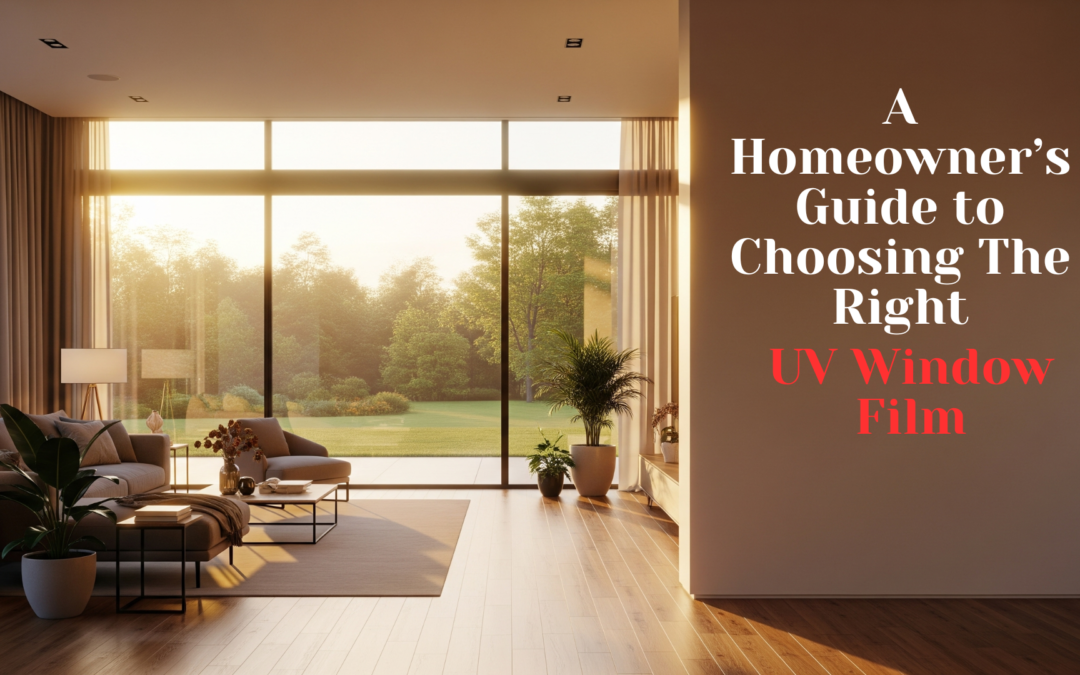For homeowners with beautiful, light-filled spaces, expansive glass walls are often a centerpiece of the design. Many associate sun control with dark car tints, but modern UV protection window film for homes is a sophisticated, often invisible, technology. The challenge is managing the sunlight that streams through your windows to protect your interiors and enhance comfort without sacrificing the very views you love.
Many assume that being indoors provides complete protection from the sun. The reality is that standard glass is not a perfect barrier. Understanding what gets through your windows—and what technology is available to manage it—is the first step in making a truly informed decision to protect your investment and your family.
The Sunlight You Don’t See
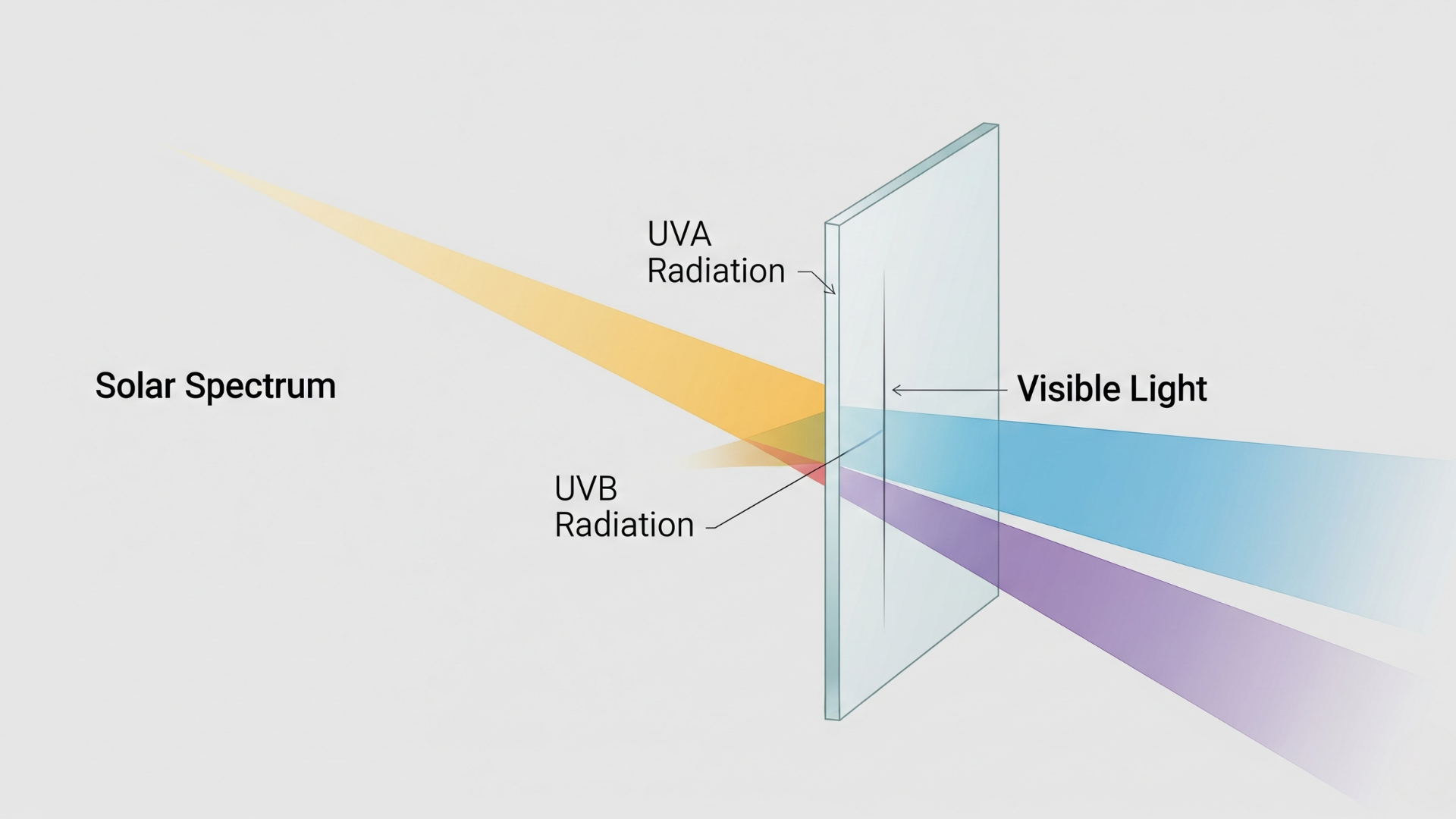
The sunlight reaching us is composed of a spectrum of rays. While your windows effectively block most UVB rays (the primary cause of sunburn):
They are surprisingly permeable to UVA rays. In fact, a standard pane of glass allows up to 75% of UVA radiation to pass right through.
Of all the UV radiation that makes it to the earth’s surface, about 95% is UVA. These are the deeper-penetrating rays strongly linked to skin aging and increased cancer risk. This is not just a theoretical risk; dermatological studies have consistently documented a higher incidence of photoaging and skin cancers on the left side of patients’ bodies—the side most exposed while driving. This phenomenon, noted in publications like the Journal of the American Academy of Dermatology, serves as powerful proof of the cumulative damage that happens through untreated glass. The primary function of a high-quality window film to block UV rays is to filter out these specific, harmful wavelengths.
More Than Just Fading: The Real Cost of Sun Damage

The constant stream of unfiltered sunlight takes a toll on your property. The fading of floors and furniture is a complex process driven by a “triad” of solar energy:
- UV Radiation (40% of the cause): The most aggressive component, directly breaking down the chemical bonds in dyes and finishes.
- Solar Heat (25% of the cause): Accelerates these destructive chemical reactions.
- Visible Light (25% of the cause): Even the light we see contributes significantly to fading over time.
This combination attacks your hardwood floors, causes upholstery to become brittle, and irreversibly damages the pigments in artwork and family photos.
Choosing the Right Technology: A Comparison of Window Film Types
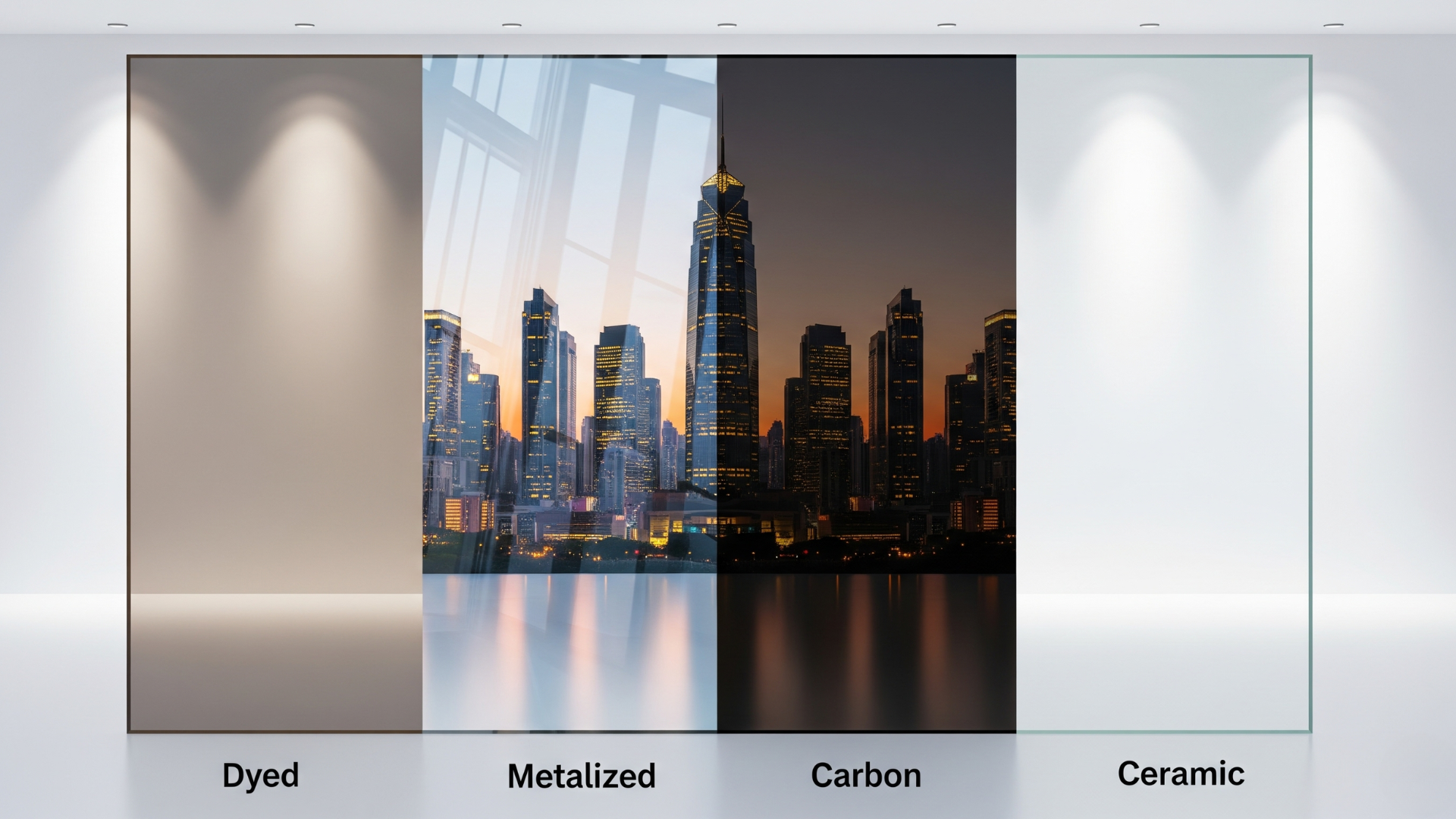
Modern UV window film is a sophisticated solution, but not all films are created equal. The technology you choose will directly impact performance, aesthetics, cost, and longevity. For homes in sunny climates, the best solar window film will often be one with a high Total Solar Energy Rejected (TSER) rating. Leading manufacturers like 3M, LLumar, and Eastman offer a range of products across these categories.
| Film Technology | Heat Rejection (TSER) | Key Characteristics | Estimated Installed Price (per sq. ft.) |
|---|---|---|---|
| Dyed Film | 15–25% | Absorbs a small amount of heat; primarily reduces glare. Prone to fading and discoloration (turning purple) over 3–5 years. | $5 – $7 |
| Metallized Film | 30–50% | Reflects heat effectively and is very durable. Can have a mirror-like appearance and may interfere with cell phone/Wi-Fi signals. | $6 – $8 |
| Carbon Film | 35–55% | Uses carbon particles for good heat rejection without signal interference. Offers a dark, matte finish and excellent durability. | $7 – $11 |
| Ceramic Film | 50–80%+ | Uses advanced, non-conductive ceramic nanoparticles. Spectrally selective, blocking enormous amounts of heat and UV with minimal visible darkening. No signal interference. | $8 – $15+ |
Considerations for Modern & Luxury Architecture
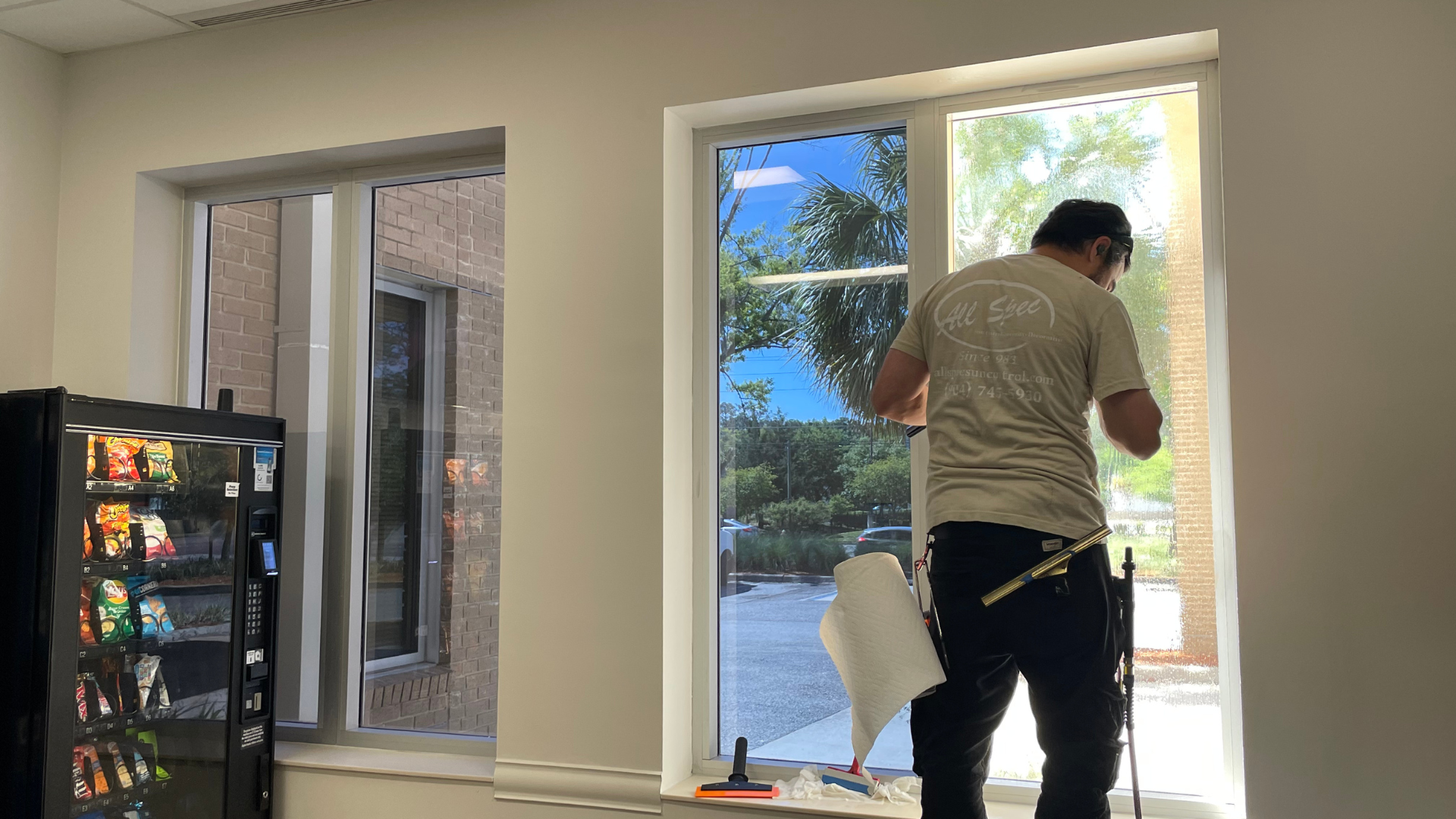
High-end properties often feature unique architectural elements that require special consideration.
- Oversized and Custom-Shaped Windows: Applying film to large-scale or non-rectangular glass is a specialized skill. It requires meticulous technique to handle large sheets of film and ensure a seamless, edge-to-edge application without contaminants. This is not a DIY task.
- Multi-Pane & Low-E Glass: Many modern luxury homes use double-pane insulated glass units (IGUs), often with a factory-applied Low-E coating. It’s crucial to use a film that is compatible with these systems. A qualified installer will know which films can be safely applied to avoid thermal stress, which could otherwise damage the window’s seals.
- Humid & Coastal Climates: In areas with high humidity, the quality of the installation is paramount. An expert installer uses specific techniques to ensure a proper adhesive bond and prevent any moisture from compromising the film’s edges over time.
Practical Considerations for Window Film For Your Home
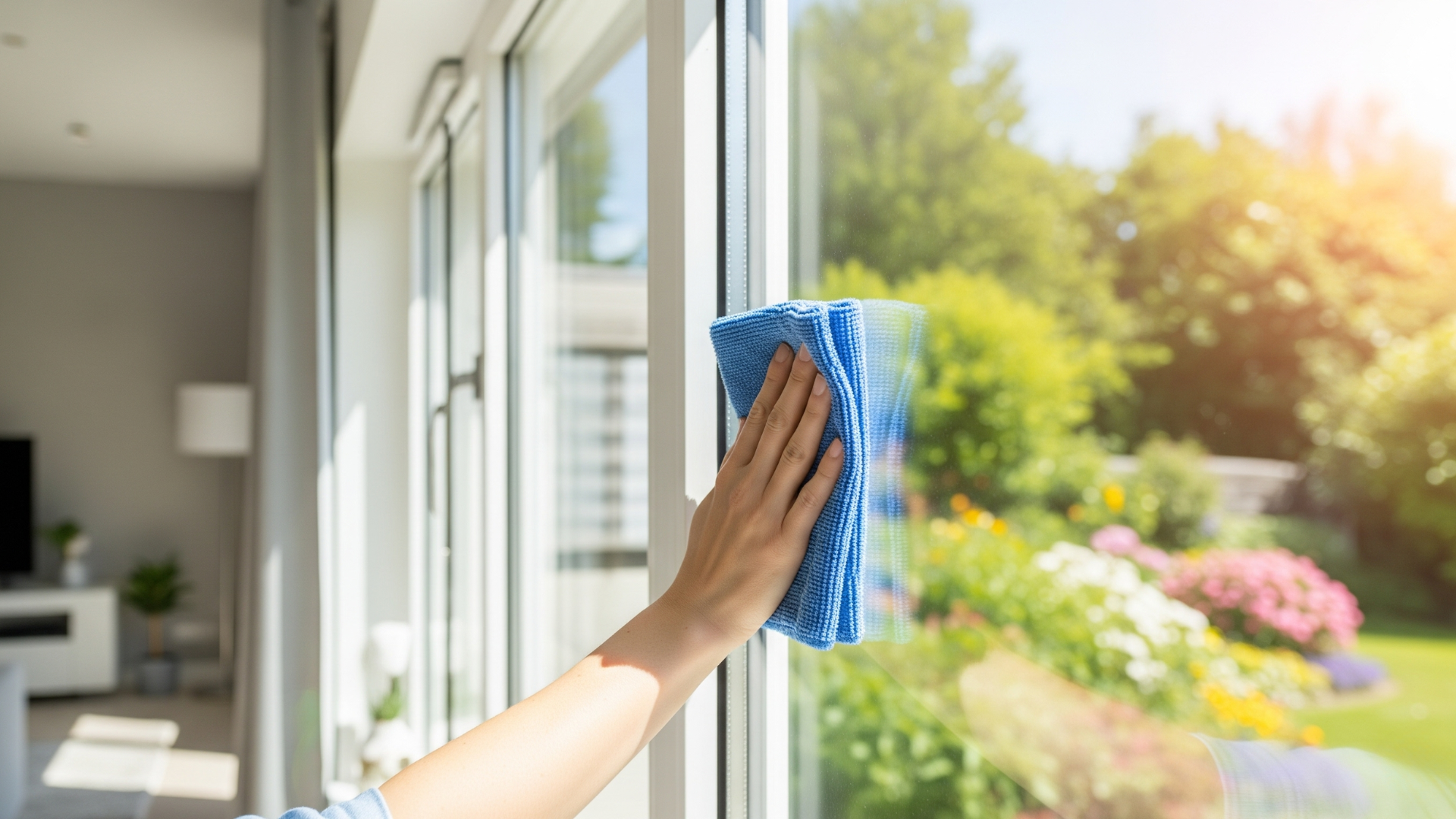
- Installation and Lifespan: While DIY kits exist, professional installation is crucial for a flawless, long-lasting finish. A professional-grade ceramic film, for instance, is an investment expected to last 15-20 years or more without bubbling or peeling.
- Maintenance: Care is simple. Films should be cleaned with a soft cloth and a mild, non-ammonia-based cleaning solution.
- Smart Home Integration: High-quality, non-metallic films like carbon and ceramic are engineered to be completely signal-friendly. They will not interfere with home automation systems, Wi-Fi networks, or cellular reception.
Making an Informed Choice
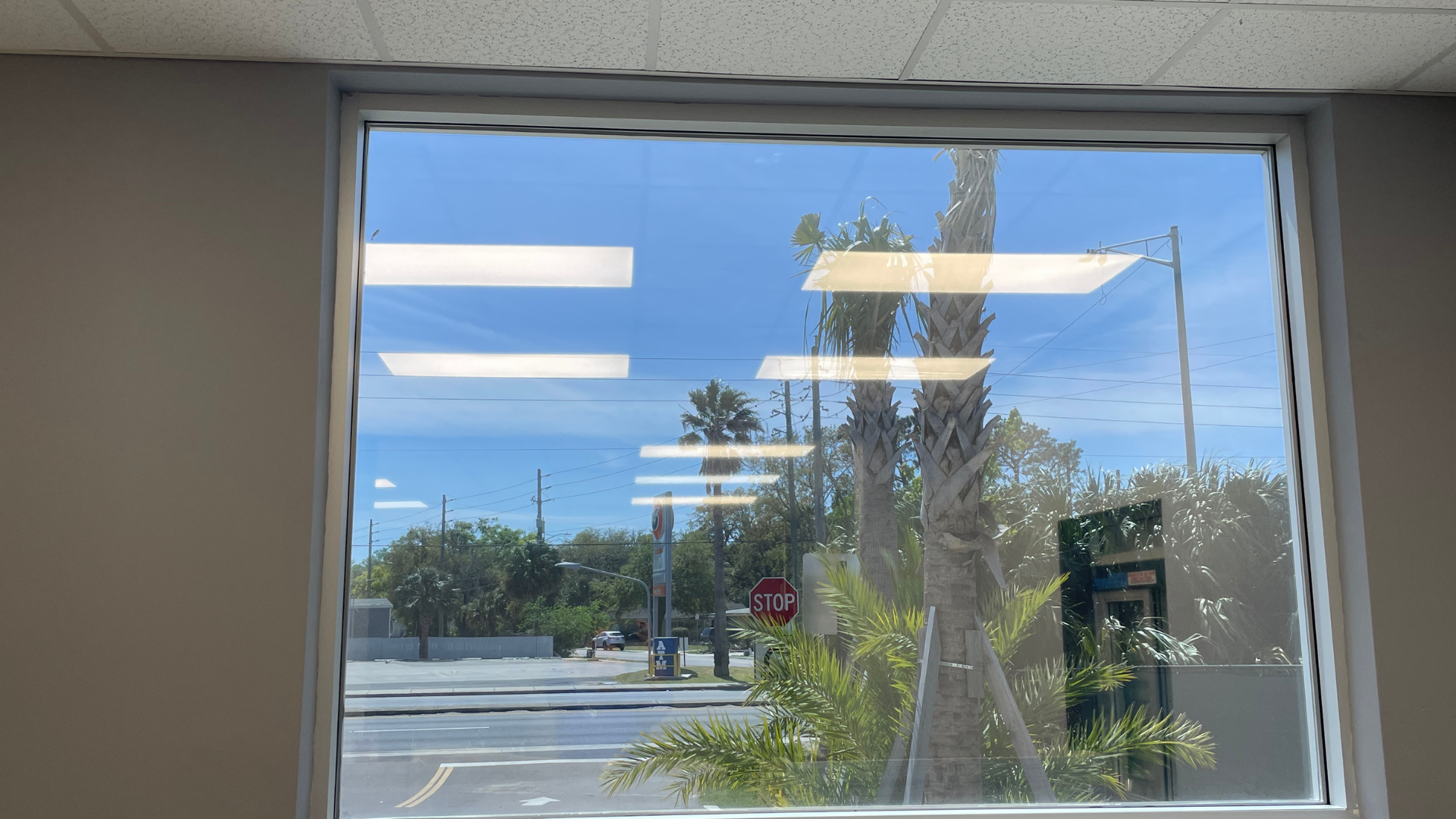
Your windows are a central feature of your home’s design. Protecting your property and family shouldn’t mean compromising your aesthetic. The goal is to find a solution that intelligently manages the sun, preserving what you value most.
To ensure you’re getting proven protection, look for films that have earned The Skin Cancer Foundation’s Seal of Recommendation. This trusted benchmark is awarded to products that have provided scientific data proving they block 99% or more of UV radiation.
Ultimately, installing the right UV-blocking window film is a nuanced decision and a smart, targeted upgrade. Armed with this information, you can have a confident, well-informed conversation with your architect, designer, or a qualified installation professional to select the perfect solution for your home.

